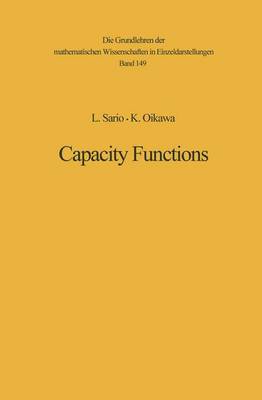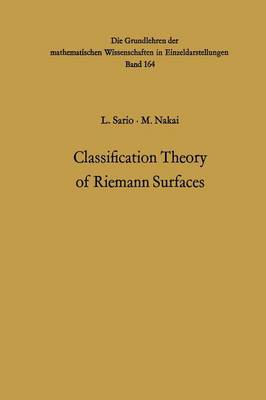Grundlehren der mathematischen Wissenschaften
2 primary works
Book 149
Capacity functions were born out of geometric. necessity, a decade and a half ago. Plane regions had been found of arbitrarily small area, yet with a totally disconnected boundary. Such regions seemed to defy the very spirit of Riemann's mapping theorem. They could be mapped conformally and univalently into a disk, with the single boundary point at infinity being stretched into a circle. The plausible explanation of the mystery is, of course, as follows. Under a mapping of the punctured sphere onto a disk, an area element near the punctured point would have to stretch more in the circular direction than in the radial direction, and the conformality would be destroyed. But if there is a sufficiently heavy accumulation of other boundary components, these can take over the distortion, and the mapping of the region itself remains conformal. Such phenomena made it an important problem to characterize pointlike boundary components which were unstable, i.e., hid in them selves this power of stretching into proper continua. Standard tools such as mass distributions, potentials, and transfinite diameters could not be used here, as they were subject to the vagaries of the other com ponents. The characterization had to be intrinsic, depending only on the region itself, in a conformally invariant manner. This goal was achieved in the following fashion (SARlO [10, 13]).
Book 164
The purpose of the present monograph is to systematically develop a classification theory of Riemann surfaces. Some first steps will also be taken toward a classification of Riemannian spaces. Four phases can be distinguished in the chronological background: the type problem; general classification; compactifications; and extension to higher dimensions. The type problem evolved in the following somewhat overlapping steps: the Riemann mapping theorem, the classical type problem, and the existence of Green's functions. The Riemann mapping theorem laid the foundation to classification theory: there are only two conformal equivalence classes of (noncompact) simply connected regions. Over half a century of efforts by leading mathematicians went into giving a rigorous proof of the theorem: RIEMANN, WEIERSTRASS, SCHWARZ, NEUMANN, POINCARE, HILBERT, WEYL, COURANT, OSGOOD, KOEBE, CARATHEODORY, MONTEL. The classical type problem was to determine whether a given simply connected covering surface of the plane is conformally equivalent to the plane or the disko The problem was in the center of interest in the thirties and early forties, with AHLFORS, KAKUTANI, KOBAYASHI, P. MYRBERG, NEVANLINNA, SPEISER, TEICHMÜLLER and others obtaining incisive specific results. The main problem of finding necessary and sufficient conditions remains, however, unsolved.

